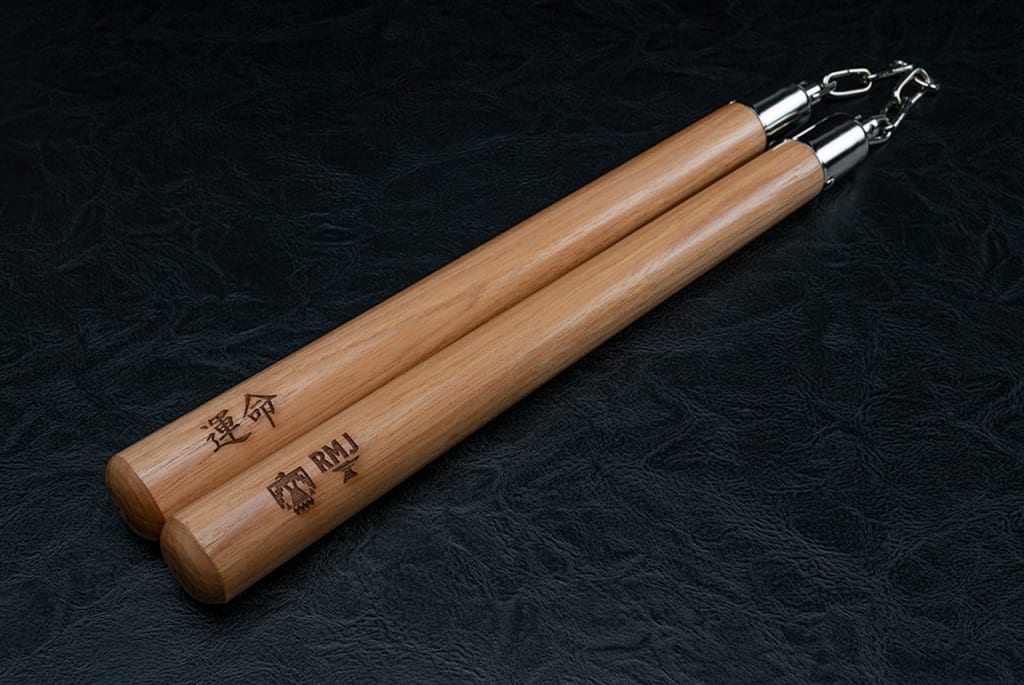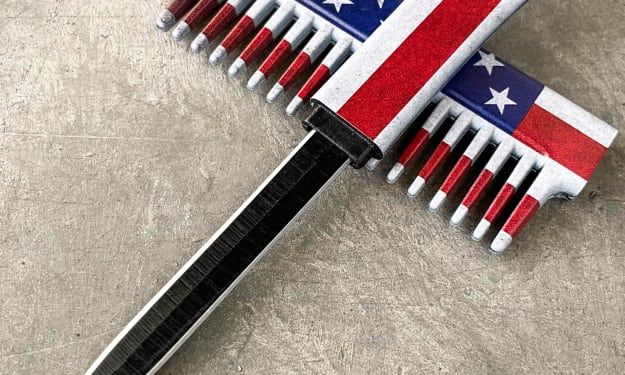Nunchucks: The Art and Power of a Martial Arts Icon!
Nunchucks

Nunchucks, sometimes called nunchaku, are a customary martial arts tool from Okinawa, Japan. They are made up of two sticks joined by a rope or chain, which permits a variety of swift and fluid movements. They were originally agricultural implements for threshing rice, but they were modified to become weapons when conventional weapons were outlawed.
Due to martial arts movies and the popularity of martial arts icons like Bruce Lee, the nunchucks became widely recognized as a sign of talent and skill. These weapons are used by contemporary practitioners not only for combat training but also for improving performance art, strength, and coordination. They can be used in martial arts and other disciplines because of their adaptable and efficient design.
Nunchaku - From Ancient Weapons to Modern Symbols
Nunchucks, sometimes referred to as nunchaku, have a rich history entwined with Okinawan, Japan's farming and martial traditions. They were originally thought to be basic farming implements used for threshing rice or soybeans, to separate grain from chaff. When Okinawan peasants were subject to strict weapon bans by the ruling samurai class during martial law periods, the industrious farmers converted their agricultural tools into weapons of self-defense. This inventiveness transformed the nunchaku from a means of subsistence into a potent weapon for fighting.
The weapon was an invaluable tool in hand-to-hand combat because of its defensive capabilities and speedy, potent strikes. The nunchucki method was developed over several centuries and eventually integrated into Kobudo, a kind of martial art. The influence of martial arts movies played a major role in the mid-20th century shift from obscurity to international recognition.
Nunchucks became an iconic symbol of martial arts prowess when the legendary Bruce Lee dazzled audiences with his stunning displays of nunchaku mastery in movies like "Enter the Dragon." They are respected today for their historical significance as well as for their function in contemporary martial arts instruction, performance art, and even exercise regimens. The nunchaku's transformation from an agricultural tool to a widely acknowledged emblem of dexterity and skill highlights the weapon's versatility and lasting heritage.
Design and Construction: Simple Yet Effective
Nunchucks, also known as nunchaku, are a mainstay in martial arts because of their simple yet effective design and construction. Made up of two sticks—typically made of hardwood—connected by a rope or chain, their design permits an amazing range of motion and manipulation. Hardwood is preferred because it is resilient to the demanding conditions of martial arts training, such as oak or hickory. These days, the material options for modern variations are more varied, offering different weights and flexibilities to meet different training needs.
These materials include metals, plastics, and composite materials. Reach and control are balanced by the length of the sticks, which are usually about 12 inches, and the connecting chain or rope, which is about 4-5 inches. This configuration enables the nunchaku to deliver swift, powerful strikes, block attacks, and perform intricate spinning techniques with precision. The flexibility of the chain or rope is essential for enabling the smooth switching between offensive and defensive techniques that define advanced nunchaku use.
Furthermore, the nunchaku's straightforward design conceals the skill needed to master its use; practice is required to build the dexterity and coordination required for efficient handling. The nunchaku is a timeless symbol of martial arts proficiency because of its unique combination of intricate usage and straightforward design. From its ancient origins to contemporary martial arts training and performance art, the nunchaku's simple yet clever design has allowed it to remain relevant, highlighting its status as a timeless tool in the martial artist's toolbox.
Mastering the Techniques: Skill, Precision, and Practice
Effective nunchuck use necessitates a high level of proficiency as well as accuracy and practice. Beginning with fundamental handling methods, beginners gain control over the nunchaku's movements and improve their hand-eye coordination. Nunchucks progress to more complex moves like spins, strikes, and blocks as their skill level rises. Flow, or the capacity to switch between techniques with ease, is one of the most important abilities for learning nunchucks.
It is necessary to have this fluidity for both defensive and offensive moves. To demonstrate their control and originality, practitioners also practice freestyle routines, which integrate a variety of techniques into choreographed sequences. A martial artist's commitment is demonstrated by their ability to master nunchucks, which calls for perseverance, self-control, and constant skill improvement.
About the Creator
Mai Sophia
A Writer/blogger by day, a knife enthusiast and survivalist by night. I've reviewed a lot of products and have helped people make the right purchase
Enjoyed the story? Support the Creator.
Subscribe for free to receive all their stories in your feed. You could also pledge your support or give them a one-off tip, letting them know you appreciate their work.






Comments (1)
Hey, just wanna let you know that this is more suitable to be posted in the Lifehack community 😊